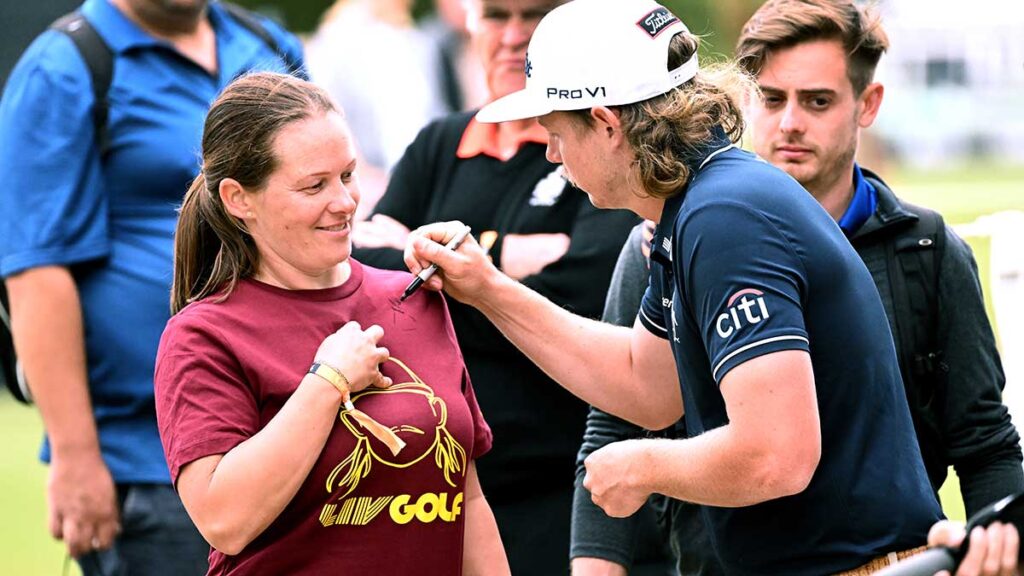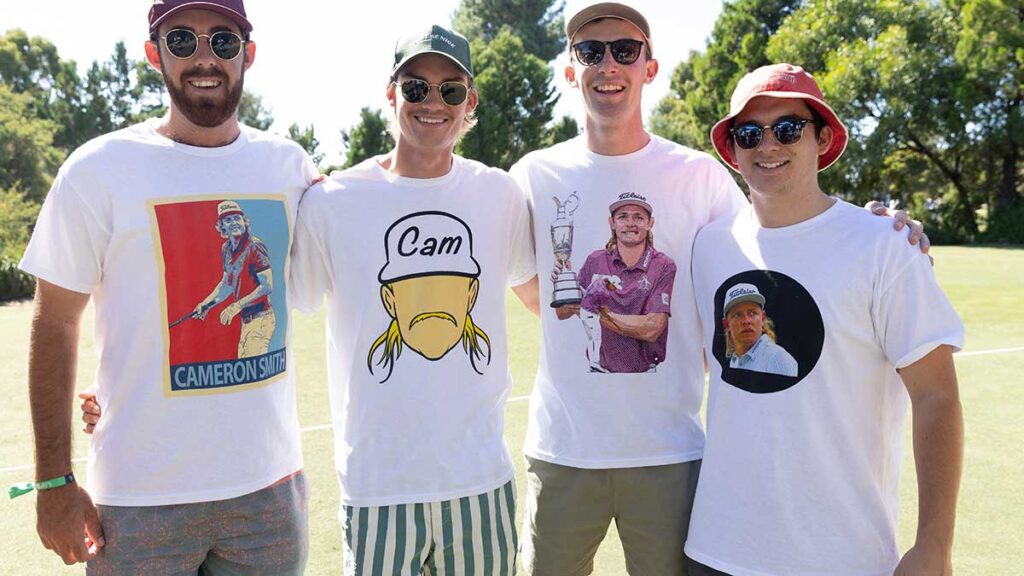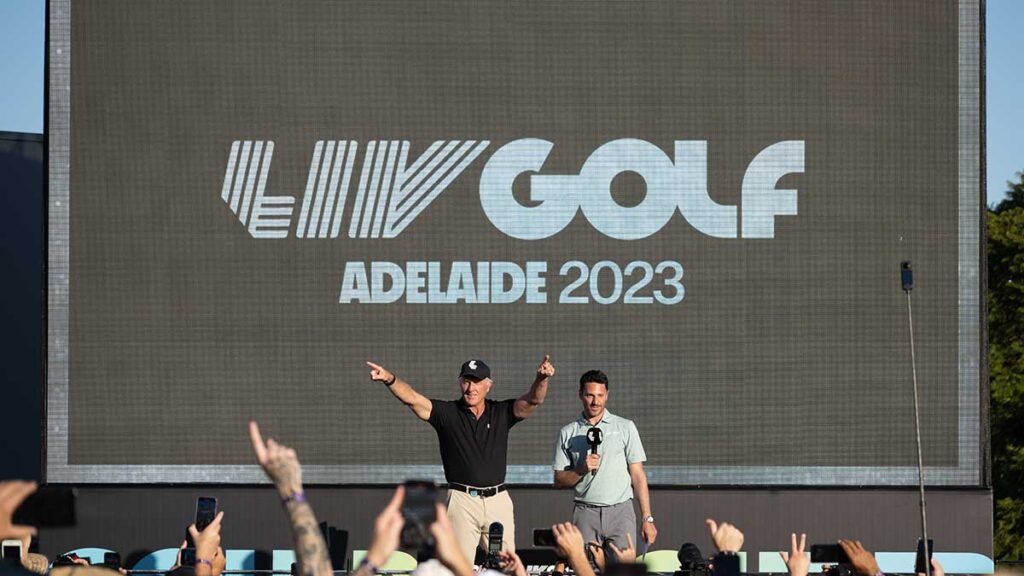Like a boxer preparing for a title fight, LIV Golf identified weaknesses in the PGA Tour business model and planned how to exploit them. LIV Golf Adelaide was proof of its strategic brilliance.
Unprecedented, unique and unsurpassed. LIV Golf Adelaide exceeded expectations with the sheer scale of the spectacle that descended upon Grange Golf Club in April. It vindicated the vision of LIV Golf chief executive Greg Norman to bring the Saudi-backed tour to his homeland.
Everything was bigger and louder in Adelaide – from the crowds that packed The Grange to the roar that greeted Chase Koepka’s ace on the ‘party hole’ 12th. The official attendance was 77,076 to watch the golf and music concerts at the conclusion of each day’s play.

The lengthy queues to enter at 9am for Friday’s first round were testament to the fact Australian golf fans have been starved of watching the world’s best players in the flesh. To witness 12 Major champions at an Australian strokeplay tournament was unprecedented. To assemble the 48-man field that competed in Adelaide would have required in the vicinity of $20 million in appearance money.
LIV Golf Adelaide attracted a younger audience. Males in their 20s, 30s and 40s came in large numbers not seen at traditional tournaments. In fact, Australian Golf Digest has never seen so many black T-shirts and tattoos on a golf course (or a tattoo parlour for that matter). Furthermore, everybody seemed well behaved. There appeared to be an atmosphere of goodwill. In a hospitality tent at the party hole, one onlooker observed there wasn’t any pushing or shoving to obtain a better view: “It’s a f—wit-free zone.”
Fan engagement was an improvement on tournaments held previously in Australia. Temporary infrastructure, scoreboards, hydration stations and spectator toilets hit the mark. Large audio speakers spread around The Grange were said to be worth $1 million. The par-3 12th – dubbed ‘The Watering Hole’ – had five corporate-style hospitality tents in which many of the 116,978 beers sold throughout tournament week would have been consumed.
The fan village had plenty of food stalls, giant TV screens, ample seating and a broadcast van (SEN SA radio). Spectators could use golf simulators, putting stages and chipping areas. There was even an AFL Kicking Challenge and Fastest Bowl cricket alley. Little children could play in a sand pit or draw sketches in the adult-supervised Kid Zone.
The merchandise tents had to be seen to be believed. Sales of 23,390 units of LIV Golf merchandise proved that fans have embraced the team-golf concept. Who could have imagined people swiping their credit cards to buy Ripper GC T-shirts with a silhouette of Cam Smith’s mullet?
That’s not to say LIV Golf Adelaide went off without a hitch. The infrastructure build continued up until the start of the tournament. And, Australian Golf Digest is aware of a respected tournament director who quit a month before the event because of the difficulty getting approvals out of Dubai, London and America.

The shrewdness of Greg Norman
That LIV Golf Adelaide was staged without assistance from the two governing bodies in Australia is a remarkable achievement. Golf Australia and the PGA of Australia were conspicuous by their absence (in an official capacity). By aligning themselves with the PGA Tour, it begs the question as to whether they’ve hitched their wagon to the wrong horse.
The success of Adelaide would have strengthened Norman’s desire to bring another LIV event to Australia along with as many as three Asian Tour International Series tournaments. With LIV Golf pumping $US300 million into the Asian Tour over the next 10 years, aspiring professionals have a new pathway onto the world stage.
The avenue onto the PGA Tour is full of obstacles. For a decade there’s been no direct entry onto the PGA Tour through qualifying school (although this year’s Q-School will offer five playing cards). The current pathway forces players to battle it out for nine months of the year in the Americas on the Korn Ferry Tour where last year’s average earnings were $US71,992. That’s a difficult challenge for non-Americans faced with expenses for travel, accommodation, food and caddie payments.
It’s perhaps little wonder we’ve seen Australia’s presence on the PGA Tour diminish in the past 15 years. This year’s Waste Management Phoenix Open had just two Australians in the field compared to 17 in the 2008 tournament. It stands to reason Australians will look to the Asian Tour to further their playing careers.
As chief executive of LIV Golf, Norman has proven to be a shrewder operator than many gave him credit. The Great White Shark saw flaws in the PGA Tour’s business model, making it ripe for a rival organisation with deep pockets to take advantage.
In the initial stages, LIV threw ridiculous amounts of money to lure the like of Phil Mickelson, Dustin Johnson, Brooks Koepka and later Cameron Smith. Many pundits questioned LIV’s own business model, seemingly oblivious to the largesse of the Public Investment Fund, the sovereign wealth fund of Saudi Arabia. Consequently, in an attempt to prevent its marquee players being poached by LIV Golf, the PGA Tour was forced to raid its reserves to increase tournament purses as well as fund the Player Impact Program. That’s in addition to the costs associated with funding six golf circuits.
The PGA Tour will stage 54 tournaments on its current wrap-around season (2022-2023), of which only four are played outside North America – The Open Championship, Scottish Open and Zozo Championship in Japan (twice). That left the door open for a competitor such as LIV to tap into fanatical golf markets such as Great Britain, Thailand, Singapore, Australia and Spain.
Meanwhile, the Champions Tour and Korn Ferry Tour have become saddlebags around the neck of the PGA Tour. It must prop up 26 tournaments on the Korn Ferry Tour (minimum purse $US1 million) and 28 events on the heavily subsidised PGA Tour Champions (minimum purse $US1.8 million). Additionally, the PGA Tour has agreed to underwrite the DP World Tour (formerly European Tour).

To say the PGA Tour is haemorrhaging money would be an understatement. It has been forced to defend itself on multiple fronts – or risk losing its status as the game’s prime mover.
Meanwhile, LIV has reinvented professional golf with 54-hole events and shotgun starts. Along with a carnival atmosphere, upbeat music and aprés golf activities, LIV has shown a willingness to treat fans to something entirely new.
Norman may come across as vindictive in his desire to get one over the PGA Tour. Understandably so, given the cold treatment meted out by commissioners Tim Finchem and Jay Monahan.
But with the passing of time in this war over professional golf’s soul, it may be Norman who has the last laugh.



